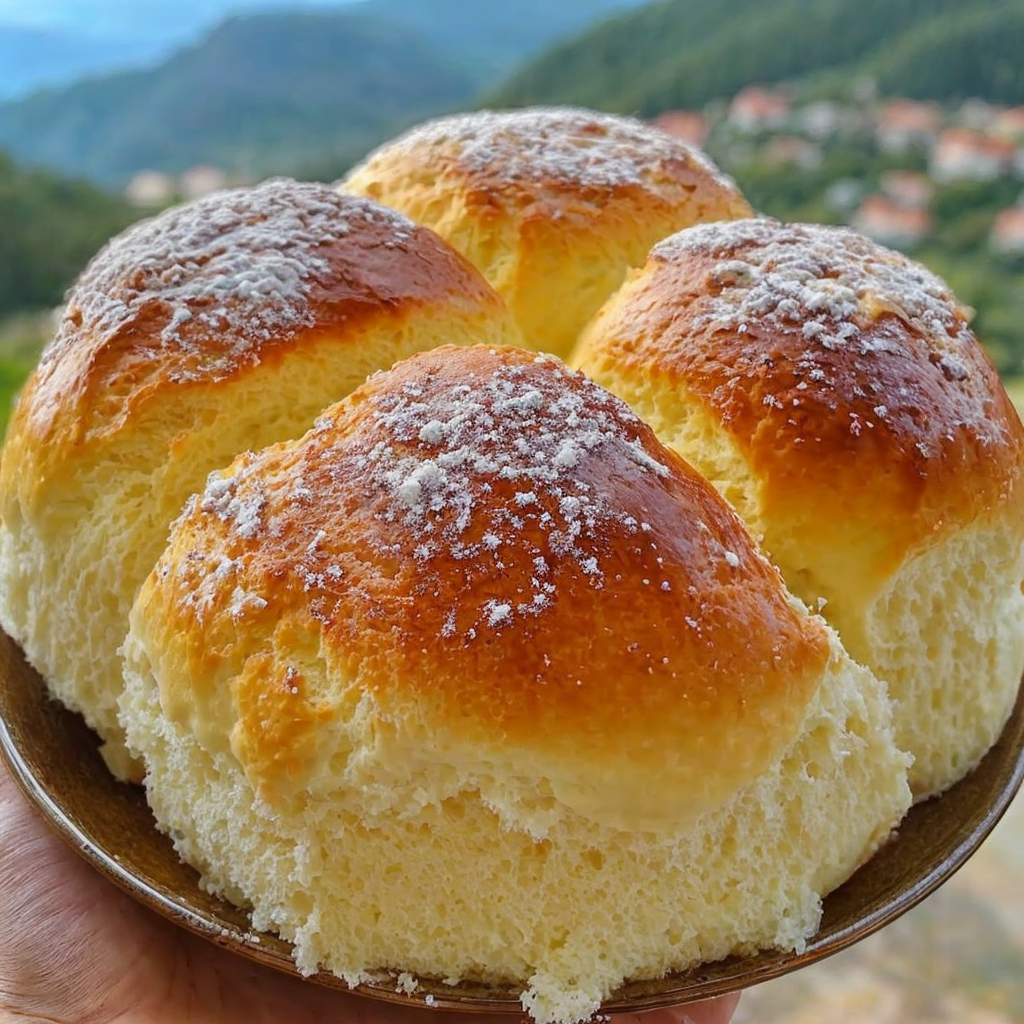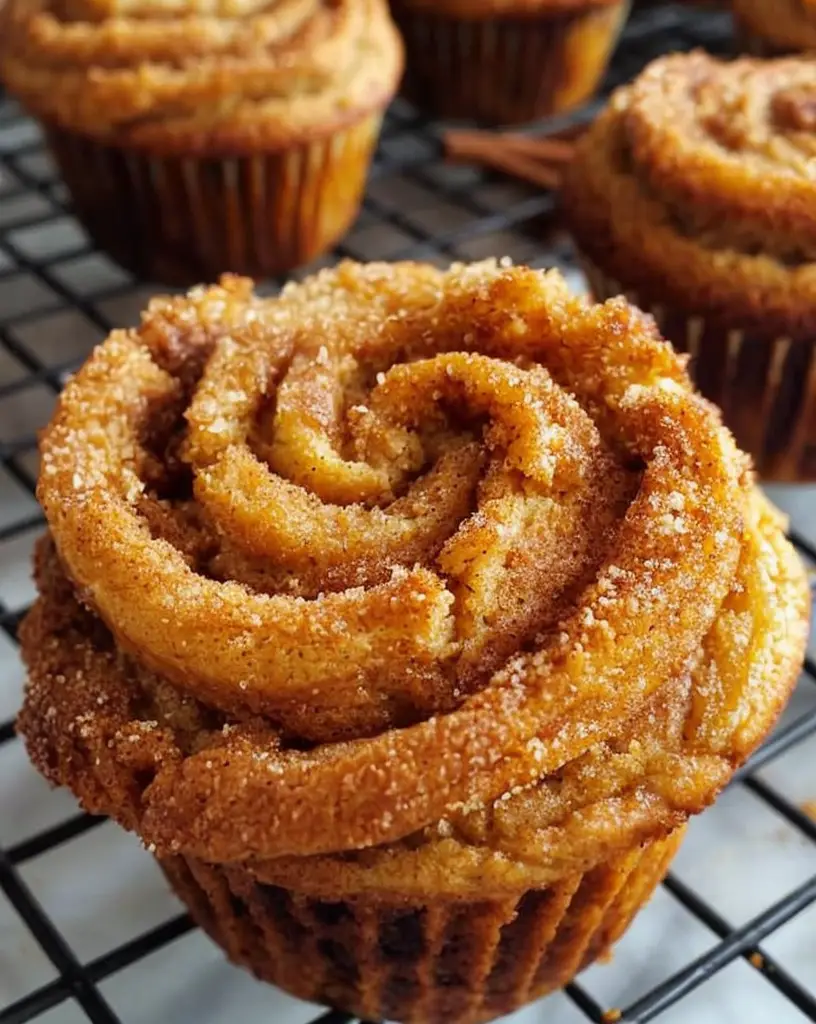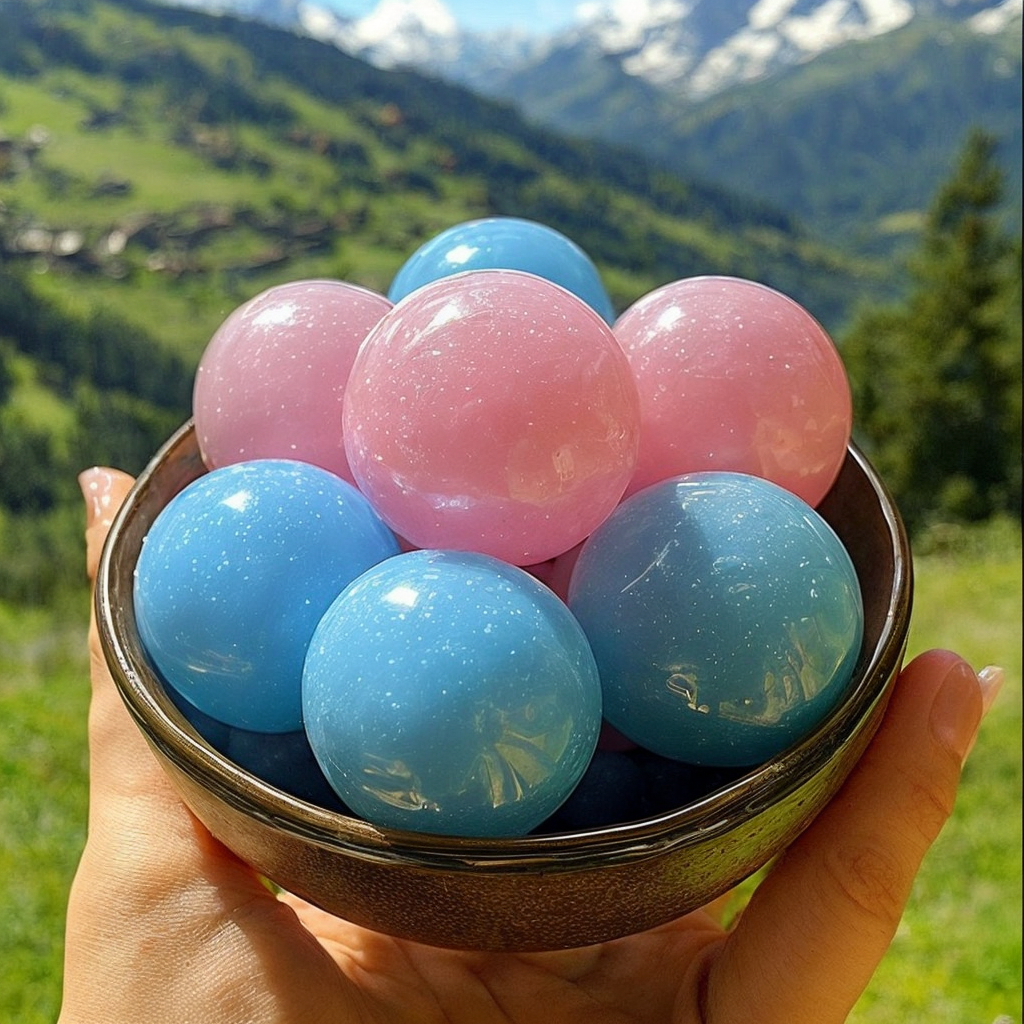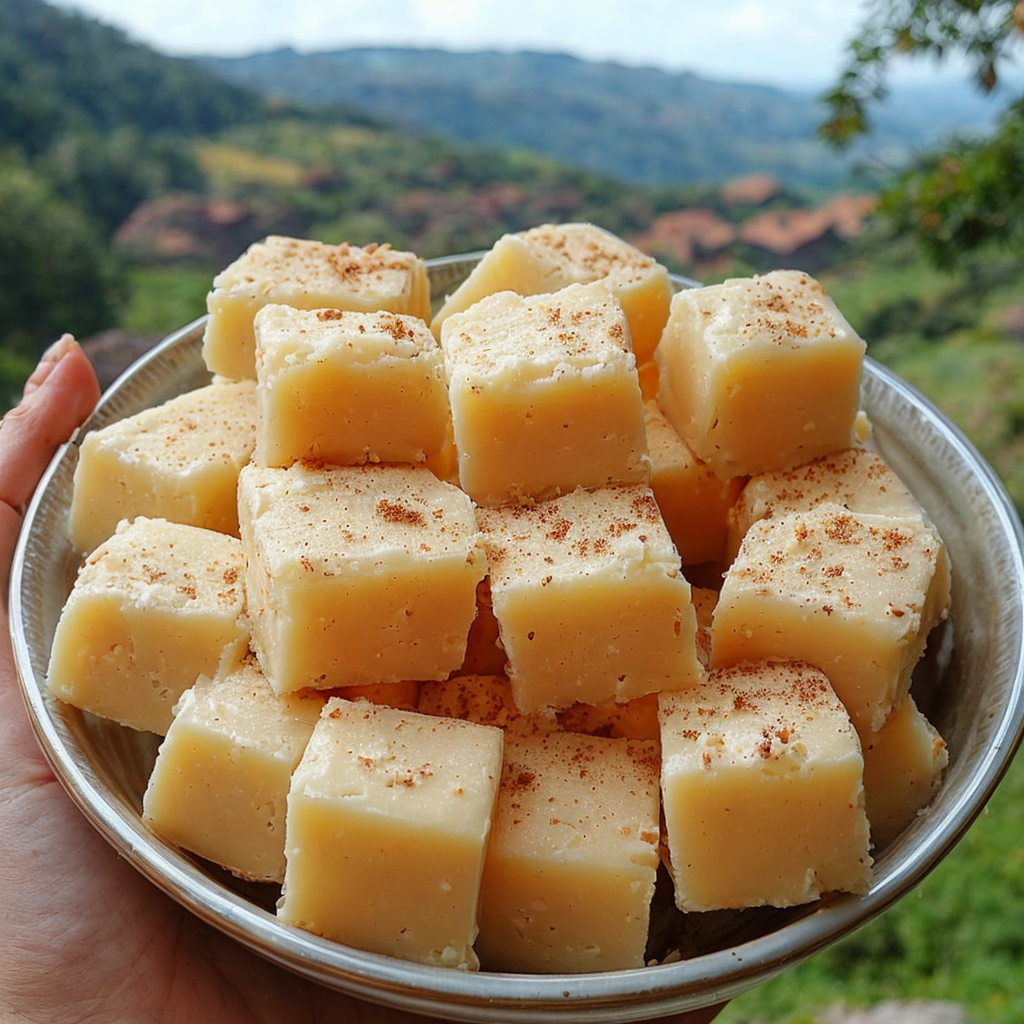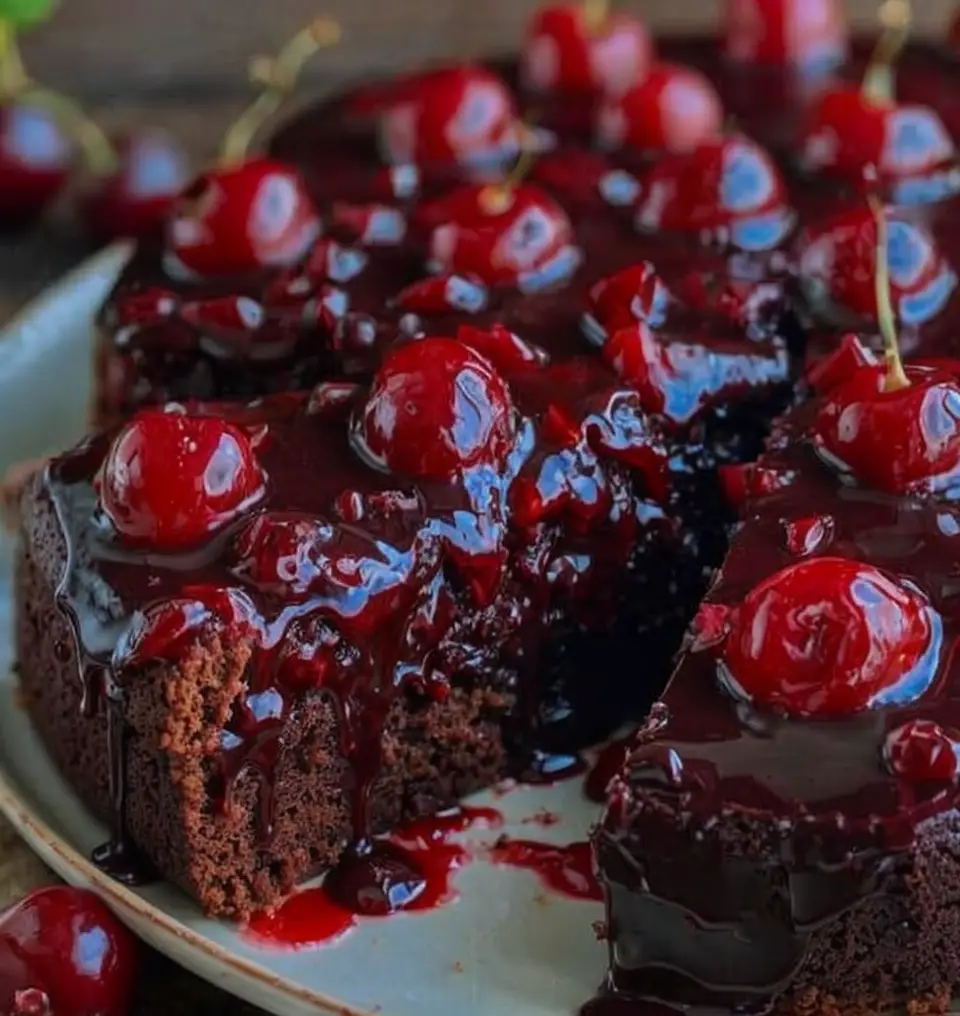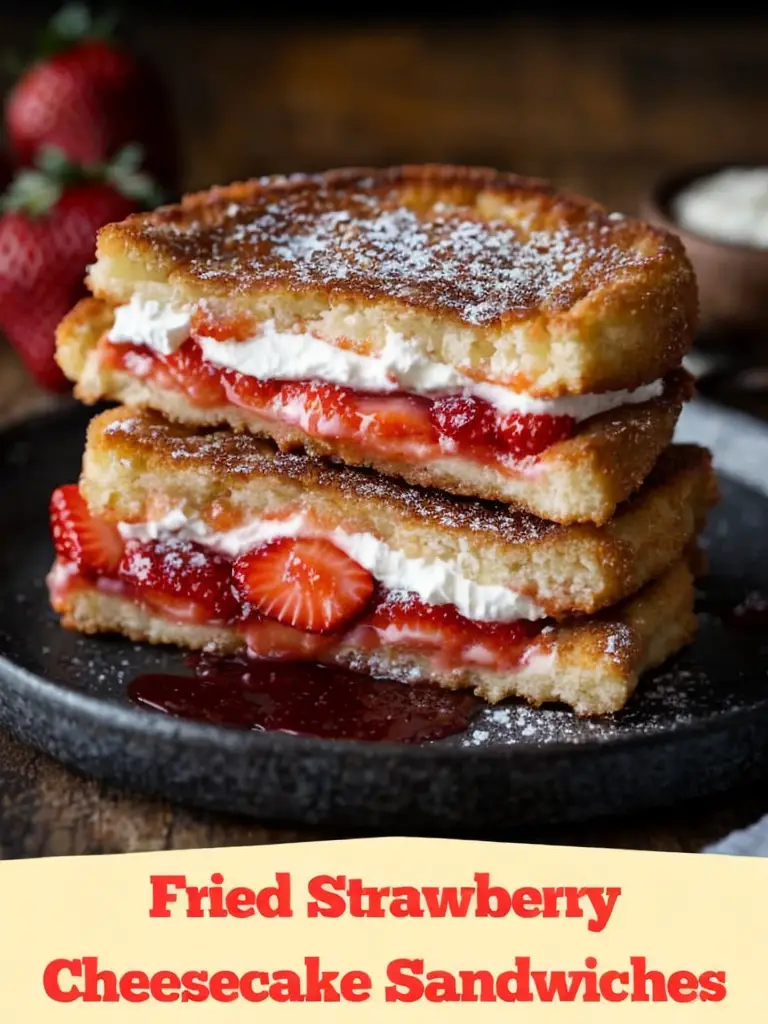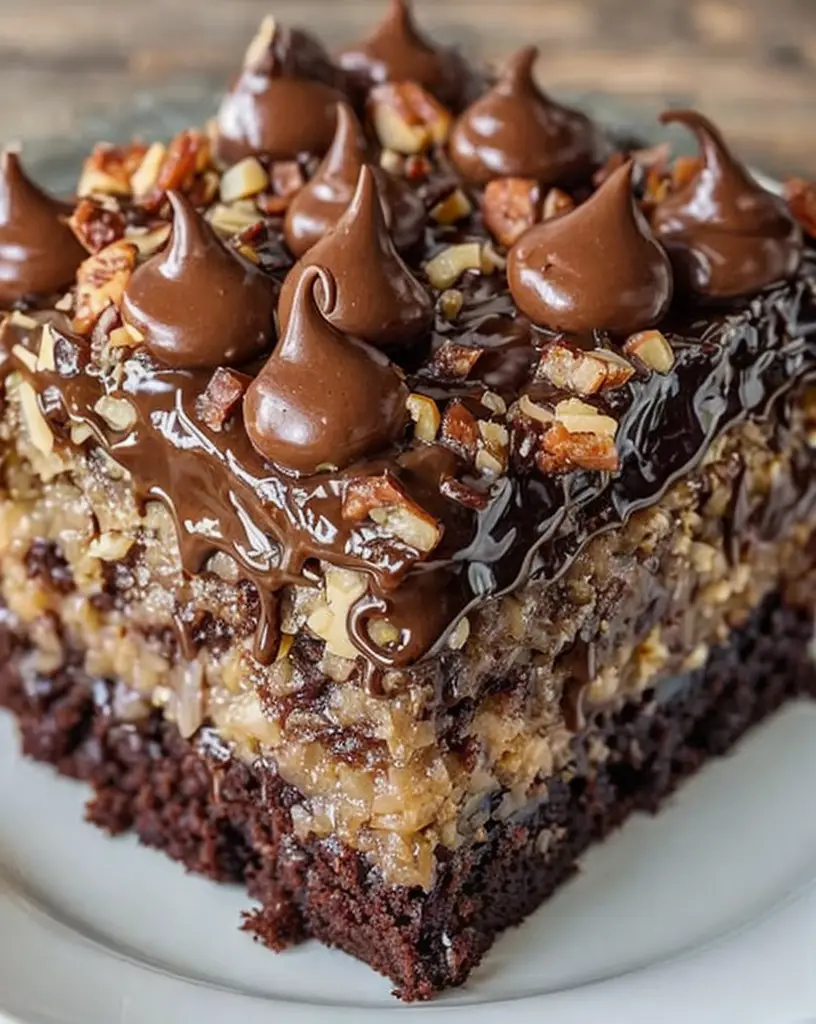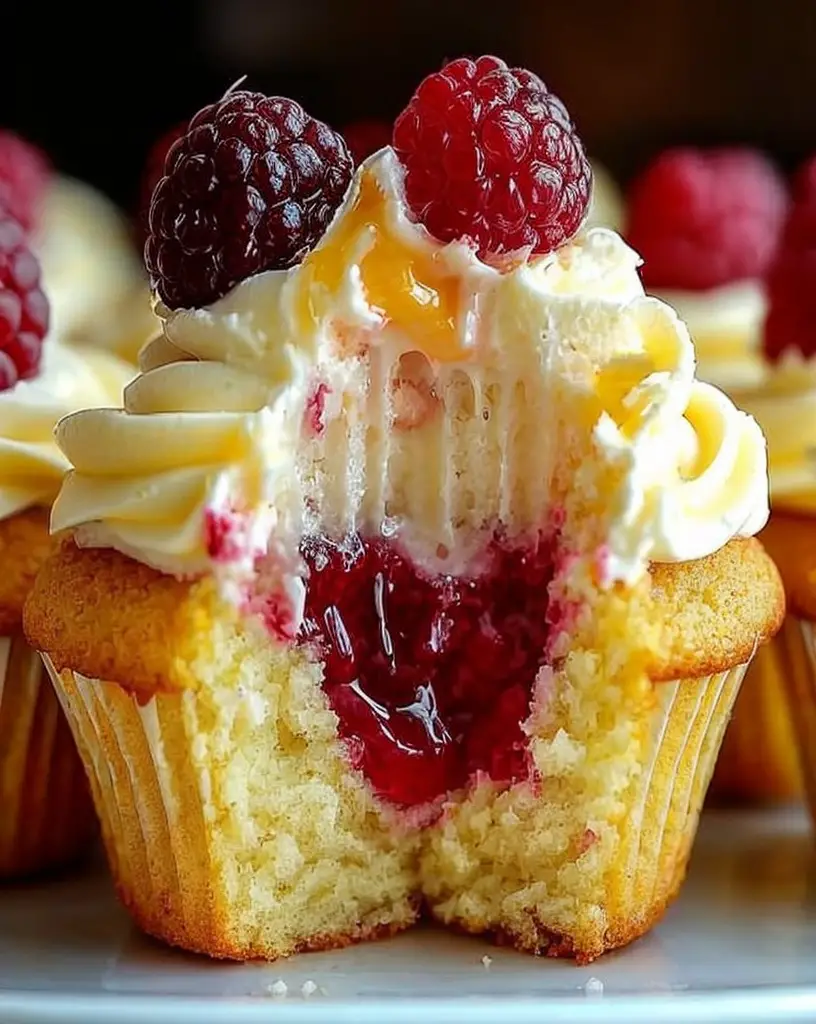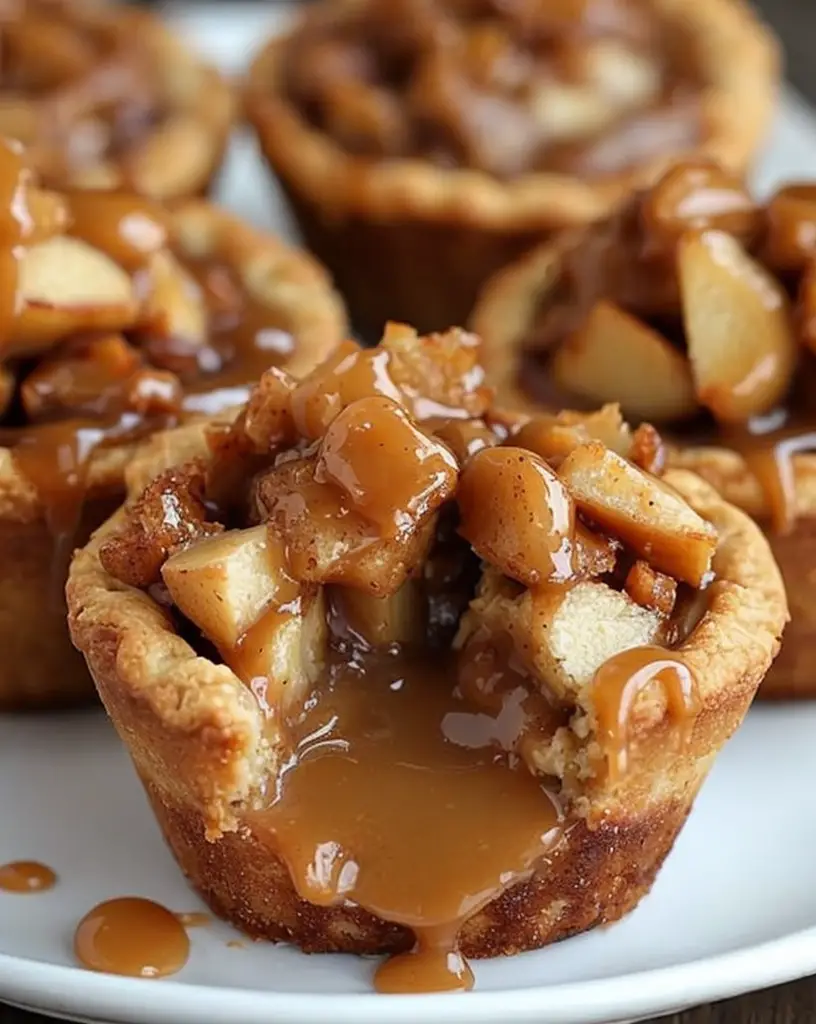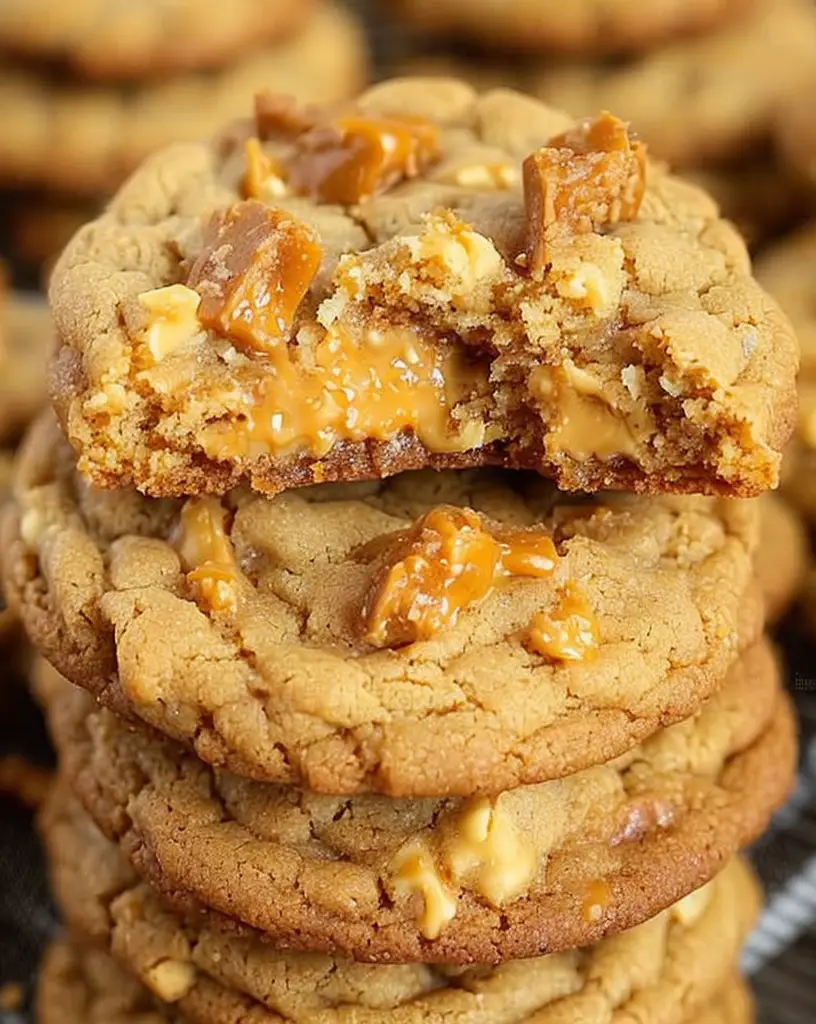Milk Brioche: A Heavenly Delight for Your Taste Buds
If you’ve ever dreamed of a cloud-like bread with a buttery essence that melts in your mouth, then Milk Brioche is your dream come true. This Milk Brioche recipe takes your taste buds on a splendid journey with its soft texture and gentle sweetness. The recipe combines the perfect amount of milk and buttery richness to create a beautiful loaf that evokes comfort and warmth with every bite. Whether you’re savoring it for breakfast or as a delightful snack, this Milk Brioche promises to enchant you and your family.
The allure of this Milk Brioche lies in its versatile taste that pairs perfectly with a cup of coffee or tea. It’s a fit for any occasion, whether you’re hosting a brunch or need a companion for your homemade jam. The Milk Brioche recipe is easy to follow, making it an ideal choice for both beginners and experienced bakers who are looking to expand their baking repertoire. The preparation is a delightful experience, allowing you to indulge in the satisfying process of bread making.
Quick Recipe Highlights
- Flavor Profile: The Milk Brioche offers a balanced sweetness with buttery undertones, offering a rich taste without overpowering the palate.
- Texture: Expect a light, airy crumb that is tender yet holds its structure, characteristic of a well-crafted brioche.
- Aroma: A warming aroma of fresh-baked bread fills the kitchen, with hints of sweet milk and buttery goodness.
- Visual Appeal: The brioche boasts a golden-brown crust with a delicate sheen, making it a visual centerpiece on any table.
- Skill Level Needed: This recipe is accessible to moderate baking skills, rewarding patience and attention to detail.
- Special Equipment: A stand mixer with a dough hook and a loaf pan shape this brioche to perfection.
Recipe Overview
- Difficulty Level: While it may require some kneading and time, the straightforward method rewards patience with a stunning loaf.
- Category: Milk Brioche fits seamlessly into breakfast dishes or as a standalone snack, enhanced with various toppings.
- Cuisine: Rooted in French tradition, this brioche draws from classic patisserie techniques, emphasizing rich and luxurious ingredients.
- Cost: The ingredients are affordable, focused on staples like flour and milk, making this an economical treat.
- Season: Ideal year-round, this brioche is particularly comforting during fall and winter, complementing warm seasonal beverages.
- Occasion: Perfect for brunches, family gatherings, or a simple weekday treat, offering a touch of elegance to any meal.
Why You’ll Love This Recipe
The Milk Brioche is loved for its perfect blend of taste and texture, offering a light yet flavorful bread that pairs with various accompaniments. The subtle sweetness aligns with the creamy consistency, allowing the bread to be both a standalone snack and an ideal component of more significant dishes. This versatility ensures it pleases a wide range of palates, creating a universal appeal.
In terms of convenience, the Milk Brioche is surprisingly simple to make. The dough comes together smoothly, and with proper kneading, it achieves the ideal balance of elasticity and tenderness. Preparing the dough and watching it rise is an immensely gratifying experience that adds to the overall joy of the recipe.
Nutritionally, the Milk Brioche provides a delightful midpoint between indulgence and balance. The inclusion of milk adds nutritive value, while mindful portions keep it a light choice. It’s a reminder that indulgence in moderation can be both pleasurable and nourishing.
Socially, presenting a homemade Milk Brioche signals warmth and hospitality. Its elegant look and inviting aroma create a welcoming environment for guests and make any occasion feel special. Serving this brioche at gatherings becomes a shared experience that evokes memories and stories.
Finally, the cost-effectiveness of the Milk Brioche is a significant advantage. Made primarily from pantry staples, it requires minimal additional cost for a fresh loaf of bakery-quality bread. This makes it accessible for any budget while still delivering exceptional flavor and appeal.
Historical Background and Cultural Significance
The origin of brioche dates back to medieval France, where it gained a reputation as a luxury bread enjoyed by the upper class. Its rich ingredients like butter and eggs distinguished it from simpler peasant breads and cemented its place in French baking traditions.
Culturally, brioche has become synonymous with French patisserie, a staple in bakeries worldwide. Its luxurious nature embodies the artistry and precision associated with French culinary practices. It is a testament to France’s impact on baking norms and techniques that have been revered for centuries.
Through time, the Milk Brioche recipe has evolved to accommodate modern tastes and methods. Techniques have been refined, and ingredient accessibility has broadened its popularity, making it a beloved recipe across cultures. Adaptations like using milk add a unique twist to the classic, enhancing its softness and flavor.
Regionally, variations of brioche can be found across France and the globe. Each version reflects local tastes, featuring unique fillings or toppings. This diversity showcases the adaptability of the original recipe and its ability to delight a myriad of palates while retaining its quintessential qualities.
Ingredient Deep Dive
Milk is central to this brioche, lending not just flavor but a velvety texture that defines the loaf. Historically, milk in baking symbolizes abundance, adding richness to recipes. It hydrates the dough while imparting a mild sweetness, crucial for balancing flavor profiles.
Nutritionally, milk offers benefits like calcium and protein, enhancing the health profile of the brioche. When selecting milk, opt for full-fat options to maximize richness. Stored in a cool, dry place, milk keeps fresh refrigerated, ensuring it maintains its quality for baking.
Flour provides the structure necessary for Milk Brioche’s characteristic crumb. Understanding flour types is essential, with high-gluten varieties offering the best results due to their protein content. This aids in developing the dough’s elasticity, crafting that coveted airy texture.
Store flour in a cool, dry location, using airtight containers to prevent moisture absorption. Measuring accurately is crucial; using scales ensures precision, guaranteeing the brioche achieves the desired texture and flavor. Substituting with whole grain variants offers a heartier version but alters the classic texture.
Common Mistakes to Avoid
- Not measuring ingredients precisely can lead to an unbalanced dough, affecting texture and rise.
- Over-kneading can make the dough too stiff, resulting in a dense loaf. Knead until just enough elasticity is achieved.
- Under-proofing prevents the dough from developing fully, yielding a flat brioche. Allow it ample time to rise.
- Skipping the egg wash will sacrifice the brioche’s signature glossy finish. Don’t skip this step!
- Using cold ingredients can hinder proper yeast activation, impacting dough development and flavor.
- Rushing the process will compromise flavor and structure. Patience is key for optimal results.
- Over-baking will dry out the brioche; monitor closely to achieve a golden crust without scorching.
- Inadequate cooling can cause a soggy base. Let it cool on a wire rack to ensure even evaporation of moisture.
Essential Techniques
Kneading is fundamental for establishing gluten structure, essential for the Milk Brioche’s fluffy nature. This technique ensures the dough becomes smooth and elastic, necessary for trapping air and achieving the perfect rise. Mastery lies in knowing when the dough has been adequately worked; look for a tacky, not sticky, texture, which indicates readiness.
Proofing, or allowing the dough to rise, is where the magic of yeast takes place. Proper proofing provides the bread with its airy texture and develops flavors. The dough should double in size; this expansion can be visually confirmed with light touch tests – a finger’s indentation indicates completed proofing when it springs back slowly.
Pro Tips for Perfect Milk Brioche
Understanding ingredient temperatures is crucial; ensure they are at room temperature, especially the milk and butter, for seamless integration into the dough. This uniform temperature helps activate the yeast effectively and mix ingredients smoothly.
Invest in a reliable stand mixer, as it simplifies the kneading process substantially. The consistent motion of the dough hook mirrors hand-kneading, giving you the desired dough texture with less effort and time.
Take extra care with the egg wash, as it influences the finished brioche’s look significantly. A well-applied, even coating guarantees a beautifully browned, glossy crust that is not only visually appealing but also adds a mild flavor layer.
Practice makes perfect; experiment with making the Milk Brioche multiple times to refine your approach with technique adjustments according to results. Documenting these tries helps you learn what tweaks provide the best personal variations.
Adding flavor to this Milk Brioche can be as simple as incorporating vanilla extract or a hint of citrus zest to the dough, providing a delightful twist to the classic flavor, inviting a new layer of taste that can complement various pairings.
Avoid exposing the dough to drafts while it proofs, as temperature inconsistencies can prevent it from rising properly. Opt for a warm, stable environment where the dough can double in size without external factors affecting it.
Variations and Adaptations
Regional adaptations include filling the Milk Brioche with local sweet or savory ingredients, allowing cultural flavors to enhance traditional base recipes. Emphasizing such tastes can offer an exciting twist on the familiar.
Seasonal flavors can be incorporated through fillings or toppings according to what’s available, such as fresh fruits in summer or spices like cinnamon in autumn. This adds an element of novelty to the brioche with each season.
For dietary modifications, consider using dairy-free milk alternatives to create a lactose-free version, adapting the recipe without sacrificing flavor and texture. Likewise, gluten-free flour options exist but may require additional adjustments for structure and flavor.
Those seeking flavor upgrades might introduce spices, such as cardamom or nutmeg, into the dough, providing an aromatic hint that elevates the bread subtly. Chopping bittersweet chocolate into the dough can transform this brioche into a dessert.
For texture modifications, mix in toasted nuts or seeds to add crunch. This can cater to those preferring a more substantial mouthfeel while enhancing the bread’s taste.
When focusing on presentation, shaping the dough into rolls or decorative braids provides diversity in appearance, making it a table showpiece for any occasion and allowing versatility in serving options.
Serving and Presentation Guide
Plating techniques should emphasize simplicity, allowing the brioche’s natural beauty to shine. Serve slices on a broad, wooden platter or elegant tray to enhance its artisanal look, inviting guests to partake visually and gastronomically.
Garnishing with sliced fruits or a dusting of powdered sugar can add color and visual appeal, also complementing the flavor profile while enhancing its festive appearance for special occasions or everyday luxury.
Traditionally, brioche is paired with preserves, butter, or light curds to enhance its softness with creamy or tart accents, creating a balance of texture meeting diverse palates.
Modern serving suggestions include using Milk Brioche as a sophisticated base for savory sliders, matching its mild sweetness with spicy or zesty fillings for a luxurious twist on typical sandwiches.
Temperature considerations are vital; serving the brioche warm amplifies its soft, buttery profile, while allowing cooling down prevents excessive moisture release, maintaining peak freshness and mouthfeel.
Keep portion sizes in mind, especially when serving as part of a larger spread. Thick slices or smaller rolls provide manageable servings, ensuring your lovely brioche finds a wide audience, enjoyed by all.
Wine and Beverage Pairing
For wine pairings, opt for a sweet or off-dry white wine like a Riesling or Moscato; their fruity notes and slight acidity complement the brioche’s subtle sweetness and buttery notes beautifully.
Non-alcoholic alternatives like spiced apple cider or a fruity iced tea bring out the flavors with a warm, comforting edge or refreshing twist, perfect for different seasons and preferences.
A robust coffee blend or delicate tea can heighten the Milk Brioche’s flavors, offering complementary warmth and depth. Serve hot, enhancing the bread’s tender qualities and elevating the entire experience.
Temperature matters; serve beverages chilled for contrast in summer or warmed to echo the brioche’s comfort in winter, depending on the meal’s context and seasonal appropriateness.
Take care when suggesting serving sizes for beverages to match the brioche portions, ensuring balance in flavors and satisfaction without overpowering the meal’s simplicity.
Storage and Shelf Life
Once cooled, store Milk Brioche in an airtight container to maintain its freshness, preventing exposure to air, which risks the bread becoming stale too quickly.
Keep it at room temperature for short-term storage but refrigerate to prolong shelf life, particularly in warmer climates where humidity may hasten spoilage even under cover.
Use suitable containers like zip-lock style bags or tightly-sealed plastic wrap to trap moisture inside, pressure-sealing preserving the bread’s tenderness and flavor.
Watch for spoilage signs, such as mold or off-smells, recommending cautious consumption as these indicate the brioche has surpassed its optimal freshness window.
Reheat slices gently in a low-temperature oven, restoring softness without drying out the crumb. Always avoid microwaving, which may make the texture rubbery and unappealing.
For freezing, slice before storing in freezer bags. When ready, thaw on a wire rack to prevent condensation from rendering it soggy, thus retaining its desirable airy quality.
Make Ahead Strategies
Utilize a prep timeline to plan; prepare the dough a day ahead during the evening, ensuring even time for proofing and relaxing overnight refrigeration to develop flavors deeper.
Storage between steps must be airtight, especially post proof, to prevent drying out. Wrap in plastic over a lightly oiled dough surface to provide coverage care without stifling rise.
Assess quality impacts, understanding refrigeration may tighten the dough. Re-kneading lightly after bringing it back to room temperature helps maintain the right texture.
Thoughtful assembly, such as adding any fillings after shaping but before the final proof, can pay dividends for an even flavor, ensuring distribution throughout the loaf.
Upon reheating, ensure the oven is pre-warmed for minimal time and ultimate moistness, stopping the risk of hardening. Integrate warmth slowly to evoke just-baked features anew.
Fresh elements, topical for serving, can add updates to the brioche’s appeal. Incorporate vibrant garnishes or dips, breathing liveliness into leftover offerings enticingly.
Scaling Instructions
When halving the recipe, divide ingredients accurately to maintain structural integrity, and adjust yeast amount proportionally to encourage proper rising.
For doubling or tripling, consider equipment capacity. Ensure mixers or bowls are sufficient in size to handle increased volume without overworking the dough.
Timing modifications may involve lengthening kneading or rising periods subtly to accommodate expanded ingredient presence naturally without overwhelming domestics.
If large-scale production occurs, contemplate storing rising mixtures in separate containers to ensure consistency among loaves rather than overextending one space owner.
Account for storage considerations, ensuring enough airtight homes for leftovers or simultaneous consumption. Plan extra carefully to preserve taste satisfaction across meals uniformly.
Nutritional Deep Dive
The macro breakdown of Milk Brioche features a balance of carbohydrates, fats, and proteins, with flour and butter as substantial contributors alongside primary calories.
Micronutrient analysis reveals a contribution of essential vitamins, including B-vitamins from yeast and minerals like calcium present in milk, adding invisibly beneficial profiles.
Health benefits include providing energy and nutrients supportive across meal times, complete with enrichment opportunities for further baking fortification tailored to needs.
Consider dietary considerations depending on ingredient sensitivities. Substitutes can be integrated without sacrificing flavor, focusing on pure, quality collections for mistilling precision.
Portion analysis firmly centers a balance between indulgence and nutritional mindfulness, calibrating slicing size and frequency to daily intake and other consumptions.
Tactics for weight management within this indulgence context actively combine complementary items, leveraging nutrient diversity over single-source dependency and positively gourmet layers treated as experiences.
Dietary Adaptations
For gluten-free enthusiasts, substitute flour with certified gluten-free mixes, ensuring other ingredients are also gluten-safe, expanding access and maintaining dense perfection.
For dairy-free alternatives, engage plant-based creams or nut milks; ensure rich textures match home standards for consistent output.
In vegan modifications, replace eggs with flaxseed or commercial alternatives, regarding texture tightness as sustained awareness persists for replication accurately.
Low-carb seekers may wish to utilize almond or coconut flour equivalents, recognizing variations to moisture absorption differing markedly upon standard ingredient weighting.
Explore keto-friendly avenues incorporating additional eggs or optimal replacements, amplifying fats and cheeses for comprehensive and consistent health contributions.
Paleo guidelines may adjust sugars towards more natural sources, favoring almond flours and leafy, sustainable yeast proofs to align with philosophical likings.
Strong focus on low-FODMAP ideals invites scrutiny; assess substitutes as personal tolerance guides specifics better, emphasizing digestion ease through strategic content considerations.
Troubleshooting Guide
Texture issues often arise from improper kneading or rising times. Ensure adequate dough elasticity through measured practice, honing hand intuition or mixer technique.
Flavor balance can sway sweetly or savory; consider salt levels or optional spices adjusted to pivot palates decisively towards preference with nonetheless smoothness maintained.
Temperature problems can introduce less desirable elements; watch consistency of oven settings and baking durations, fine-tuning with portable thermometers.
Equipment challenges might involve mixer capacity limits; upscale with suggested brands recommended here for enhanced effectiveness or reliability among variable batches.
Ingredient substitutions imply altering moisture integration significantly. Adapt these where expectations differ moderately from typical baseline routines collectively.
Timing concerns involve broader anticipation or retrospection; structured practice can encourage prudent time management during the baking continuum established.
Recipe Success Stories
Our community members have shared inspiring stories of their Milk Brioche triumphs, with variations like adding almond flour providing unexpected yet delightful surprises.
One baker’s tale included adapting the recipe for vegan-friendly audiences, successfully harnessing plant-based alternatives that still spread smiles throughout their household.
Reader suggestions have contributed to nuanced flavor enhancements seen in unusual imbues like fragrant jasmine or green tea introductions, broadening cultural conversations.
Photography tips have been encouraged, resulting in visual testimony to the Milk Brioche’s inner silkiness and outer gleam, energizing others to convey proud results.
Freedom in seeking variations among domestic settings prompts gratitude, demonstrating newcomers confident to expand their artisanal expertise repeatedly despite differing origins.
Frequently Asked Questions
1. What makes a brioche different from other breads?
A: Brioche is richer in taste and texture due to the higher proportion of butter, eggs, and milk, offering a luxurious crumb that is tender yet resilient. It carries a signature light sweetness and a distinct aroma unmatched by many standard breads.
2. Can I make Milk Brioche without a stand mixer?
A: Yes, while a stand mixer helps achieve an ideal texture more conveniently, hand-kneading is fully viable. Pay attention to developing elasticity as you knead vigorously but mindfully. It may add time, but it rewards you equally.
3. How do I know when the dough is fully proofed?
A: A well-proofed dough usually doubles in size and holds an indentation momentarily when lightly pressed. Ensure a soft surface touch guides you accurately during observation.
4. Can I add flavoring to the dough?
A: Certainly! Vanilla or almond extracts and lemon zest are delightful additions to brioche, infusing a subtle, aromatic depth. Balance proportions wisely to prevent overpowering fundamental essences.
5. Is it possible to bake Milk Brioche in different shapes?
A: Absolutely, while traditionally shaped as loaves, forming into knots, rolls, or even wreaths showcases its versatility. Creative shaping may slightly alter baking times, but they reset elegance on your presentation marvelously.
6. What can I serve with Milk Brioche for a complete meal?
A: Complement it with spreads like honey, nut butter, or jams, or use it in savory pairings such as smoked poultry or cheeses. Its adaptable profile supports an array of culinary partners easily.
7. Is the Milk Brioche freezer-safe?
A: Yes, it stores well after cooling fully. Slice and wrap properly before freezing to lock in moisture and flavor. Thaw carefully for instant, fresh-tasting enjoyment from the freezer on demand.
8. What happens if my brioche browns too quickly?
A: If excess browning occurs, cover the bread tentatively with aluminum foil, reducing direct oven heat while completing internal bake cycles. Assess positions within as foil protects elegantly and unobtrusively.
9. What type of yeast works best for this recipe?
A: Use active dry yeast for a reliable rise. Ensure liquids remain warm enough to encourage activation, extending pre-mix waiting slightly may help utmost unlocking of yeast’s inflation potential.
10. How can I enhance the glossy finish of Milk Brioche?
A: An egg wash combining beaten egg and milk delivers optimal sheen. Applying evenly before baking and reapplying cautiously during exposes dramatic, shiny coloring unmistakably across upper crusts.
Additional Resources
Bread enthusiasts may delight in exploring related recipes like Challah or Babka, where techniques distinguish variations. These guides impart shared methodologies unfolding through nuanced deviations distinctly.
Explore ingredient information detailing the unique roles within your Milk Brioche, such as yeast fermentation or flour variety influences. Such insight advances creative experimentation with desired results.
Equipment recommendations provide reliable direction towards enhancing efficiency and consistency within baking practices, easing oversight through upscaling ambitions inclusively beneficially.
Embrace seasonal variations essential to flavor creations, utilizing prime herbs or fruits while actively storing ambient embraced in disconnects from classical renditions thriving uncover.
Links to related technique guides ensure each step – from kneading to proofing successfully – is backed by knowledge transforming unfamiliarity into willingly wielded skills.
Join the Conversation
Social media sharing welcomes broader platforms, uniting artisans who forge friendships through radiant Milk Brioche imagery, honoring yours too. Contribute stories or snapshots embellishing warmth digitally.
Incorporate photography tips sustainably empowering home bakers eager to capture achievements gratify beyond taste alone, earning affinity deservedly through momentary beauty immortalization anew.
Submit recipe reviews inviting nuanced conversations across variants seeding creativity tenfold, snippet pondering previewing suggestions kindly hosted expressively intertwined as chronicles.
Highlight community engagement reflecting diverse journeys within Baker’s Circle; everyone’s account enkindles the milk’s nourishing glow decorating timeless spreads sustaining stories worth sharing wholly.
Twist accepted wisdom adventurously, exciting recipes variations that nod experiences and incite compelling share points. Reflections reveal growth, lending new light to digital pages welcoming enlightened interaction mercifully alongside each fresh bake.
The Recipe
Milk Brioche
Serves: 8
Prep Time: 20 mins
Cook Time: 30 mins
Total Time: 50 mins
Kitchen Equipment Needed
- Stand mixer with dough hook
- Loaf pan
- Mixing bowl
- Measuring cups and spoons
- Pastry brush
Ingredients
- 3 1/4 cups all-purpose flour
- 1/2 cup whole milk, warm
- 2 1/4 tsp active dry yeast
- 1/4 cup sugar
- 1 tsp salt
- 4 large eggs
- 3/4 cup unsalted butter, softened
- 1 tsp vanilla extract
- 1 egg yolk for egg wash
Directions
- In the mixing bowl, combine the warm milk and yeast. Let sit until frothy, about 5 minutes.
- Add the flour, sugar, salt, and eggs to the yeast mixture. Mix on low speed until combined.
- Increase speed to medium and add softened butter gradually, a piece at a time, mixing until smooth and elastic.
- Knead the dough until it’s smooth and stretches without tearing, about 8-10 minutes.
- Transfer to a lightly oiled bowl, cover, and let rise in a warm area until doubled, about 1-2 hours.
- Preheat oven to 375°F (190°C). Punch down dough and shape it in a loaf pan.
- Cover and let rise until almost doubled, about 30 minutes. Brush with egg yolk.
- Bake for 30-35 minutes, or until golden brown. Cool on a wire rack before serving.
Recipe Notes
- For added sweetness, mix 1 tbsp of honey into the dough.
- To prevent over-browning, tent with foil midway through baking.
- Store leftovers in an airtight container to maintain freshness.
